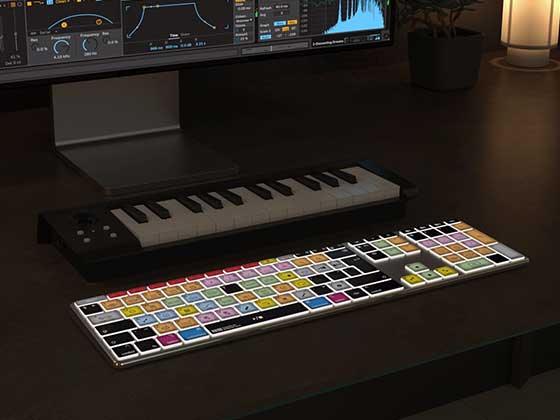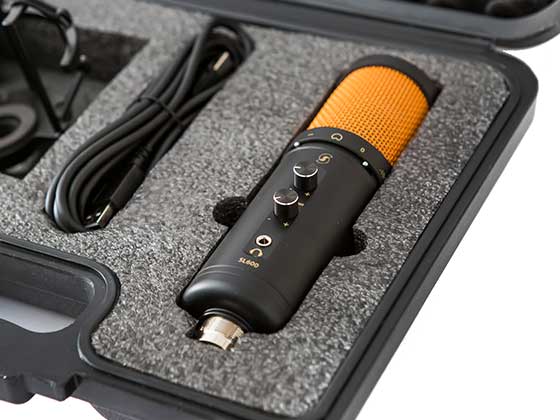How to Choose the Best Guitar, Factors to Consider According to Science
https://beginnerguitarhq.com/best-guitar/
This is a guest post by Ray Beck.
Navigating the surfeit of guitars available at your local music shop or online retailer can be a daunting experience. The sheer number of models, shapes and sizes is confusing. However, there might be a way to simplify the experience with the use of science.
The guitar as a crafted instrument relies heavily on science for its construction as well as the sound it produces. The measurements and fine-tuning that go into making a guitar are extremely precise.
An understanding of the science behind the guitar is, therefore, an invaluable tool to measure quality, and therefore, determine what is the best guitar.
Tone-wood and Sound Waves
Sound travels differently through varying materials. It moves through wood nearly thirteen times faster than air. This makes it an ideal material for musical instruments where responsiveness is key. We know that sound waves cannot travel in a vacuum. They require molecules to interact with to produce what we recognize as birdsong, a car engine, or music.
The first instrument makers sought out the best material and settled on wood. We've all heard of Stradivarius violins. The luthier Stradivari was obsessive about quality and would only use spruce wood from the Fiemme Valley in the Italian Alps. His violins are now famous for the uniqueness of their sound and have the price-tag to match, with certain copies selling for millions of dollars.
Tone-wood
Wood is favoured because of its capacity to effectively transport sound. It also has tonal qualities that differ depending on the type. Some produce brighter sounds, while others create warmer, deeper overtones. In guitar jargon, it is called tone-wood. An especially dense wood prized for the resonance of the sounds that travel through it and the propensity to shape the sound of a finished instrument.
Choosing the right type of tone-wood is an important scientific measure of the best and worst guitars. This is, however, hindered by the availability of certain tone-woods which has a direct impact on the price of a guitar. The rarer, more endangered, the wood, the more costly the instrument. It is best to rely on the specific qualities of tone-woods to determine which most suits your needs.
Another consideration is the structural value of wood. A guitar needs to hold itself together as well as produce a great tone. Guitars are known to sustain tension amounting to a few hundred pounds. Luthiers therefore search for a happy medium between tonality and strength.
Here is a list of the most common tone-woods and their respective qualities. This is by no means exhaustive and many other variants exist with similarly scientifically proven attributes.
Ash: A common, bright sounding wood known for its ability to sustain chords and notes. Ash is one of the strongest, and most economical, woods used in guitar making. Native to Europe, it is widely available and very affordable.
Alder: Also found in Europe, it is known for its low weight, and a balanced, rich tone with a generous share of both high, mid-range and low frequencies. Alder is favoured for blues and rock styles. Low priced compared to woods such as mahogany and is readily obtainable.
Basswood: One of the softer tone-woods, basswood is native to the Americas. It is used for the balanced, but ever so slightly warmer, quality of its tone. Very affordable and often seen in mixed-wood guitar models.
Mahogany: An extremely resonant hardwood that favours warmer tones, mahogany is strong, but malleable, making it a favourite of luthiers the world over. It is favoured for its durability, pleasing red color and ability to produce a rich, but twangy sound. Mahogany is heavy so be prepared for the extra weight when playing.
Maple: Primarily used for the neck and fretboard, maple produces an extremely bright sound due to its hardness. Found primarily in North America, Maple resonates well and produces defined, biting tones. Maple is mainly used on guitar necks or used with woods to balance out dark, muddier tones.
Rosewood: A heavy and visually stunning tone-wood, rosewood is most often incorporated into a build on the fretboard. It produces a rich, loud and velvety sound though at a high cost due to its rarity. This is definitely not for the more ecologically minded player.
Electric Guitars and the Tone-wood Fallacy
The importance of tone-wood cannot be understated when considering an acoustic guitar, but does it have the same impact on an electric guitar? Though enthusiastically debated to this day and marred in a conflict-ridden history, the short answer is a science-backed resounding no, or at the very least, the impact is very small.
Electric guitars use magnets and electronic circuitry to carry the sounds from the vibrating strings to an amplifier. The wood has no substantial impact on the quality of the vibrations which create the sound.
Unlike an acoustic which uses the wood to amplify and enlarge the sound, an electric guitar doesn't rely on the wood to do so. The wood simply acts as a strong base capable of sustaining the tension of the strings and onto which the other components are fixed.
Choosing an electric guitar is, therefore, much more reliant on the components, the quality of the craftsmanship and how these two affect the tone.
Acoustics
The basic premise of acoustic guitars is the transfer of the natural sound of the strings to the body of the guitar. This cavity then acts a resonance chamber where the sound waves from the strings cause the wood of the guitar to vibrate. The air inside the chamber then distorts and creates compression waves which are then amplified. This travels out into our ears, which translate it to sound or music.
In general, the wood used on the back plate and face plate interacts with different frequencies. The front usually favours higher frequencies, while the back tends to vibrate when coming in contact with lower frequencies. The two plates balance out these two frequency ranges into a unified sound. This balanced sound defines the overall tone of the guitar.
The way the plates interact with string vibration is called resonance patterns. In other words, sound waves create a pattern on the wood. The job of a luthier is to find the right wood, then mold it into a shape that makes the best pattern possible for the tone desired.
Due to the complexity of measuring the intricacies of these patterns, the science behind the way sound waves interact with the wood inside an acoustic guitar is limited. It is generally accepted that luthiering is far more an art form that utilizes elements of science rather than the other way around. For this reason, it is difficult to scientifically assess the build of an acoustic guitar to determine its quality.
Opinions and judgments are the only real measure and are not quantifiable. It simply cannot be translated into an equation. It all comes down to personal preference and what each person views as a 'good' or 'bad'.
With this in mind and beyond the basic requirement of an acoustic guitar enlarging the sound sufficiently, it is up to each consumer to determine what sounds best. Following your gut instinct is highly encouraged. Word of mouth and help from more experienced guitarists is also invaluable.
Harmonics and Tone
Consider a single musical note played on a guitar. To the ear, it is a singular sound. In reality it is formed of numerous related frequencies vibrating simultaneously to create that specific note. These are called overtones. When they are multiples of the original note played, they are called harmonics.
A guitar string is a coiled bundle of various metals, with a specific weight, girth and tension. This means that any vibration it creates will be imperfect due these real life characteristics, as well as environmental considerations, such as air resistance.
When a string vibration is initiated by a finger or plectrum, the sine-waves created are affected by the fact that the string is held in place on the machine heads and bridge. These points of contact mean it cannot vibrate perfectly: the extremities of the string will alter the shape of the vibration and create harmonics that trail in relation to the core frequency played.
If the wave was viewed mathematically and its full frequency range analyzed, you would note a large peak at the core frequency of the note, and then less pronounced spikes for the overtones. In a perfect world (or using a computer), where the string was free of imperfections and the environment had no impact, you would in theory see one large peak at the core frequency, but nothing else. This would result in an ersatz, artificial and clinical sound.
Conversely, if there are too many harmonic overtones, the guitar would sound boomy and sodden, almost oversaturated with frequencies. The tone of a guitar is, therefore, dictated by how the instrument manages the mixture of these frequencies and how rapidly they audibly subside.
Though it is clearly impossible to notice all frequency-level variations of the tone, the human ear is able to discern overall characteristics. These allow the listener to determine whether the sound is pleasant, overbearing, weak or otherwise. When considering the purchase of a guitar, trust the information provided by your ear.
Pickups
If you plan to buy an electric guitar, pay heed to the pickups. The acoustic vibrations of non-amplified strings are fairly quiet, making only low volume treble sounds. An amplifier allows the pickup to translate the vibration of the strings into a much louder, amplified output.
The quality of the pickups directly correlates with the properties of the sound produced. Bearing this in mind, it is clear they have a huge impact on the tone produced by a guitar. Scientifically speaking, a well-crafted pickup, with high-grade magnets and meticulously installed internal wiring, invariably leads to a better output.
The placement of a pickup in relation to the strings has a major impact on tone. Similarly, the number of pickups does too. Two pickups will capture the vibrations of the same string in two separate positions to create a unified tone. A pickup near the bridge creates a treble sound while one in proximity to the neck, picks ups lower frequencies.
There exists a variety of pickup types, but they rely on the basic principle of the two most common, described below:
Single-coil
Single-coil is a classic pickup with a crisp tone and brighter properties. It defines the sound of the most famous guitars and artists the world over. It is the single most important factor in the birth of the electric guitar.
Back in the 1930s luthier experimented with various ways to capture musical notes and transform them into an electrical signal that can then be amplified. The most encouraging iteration was the magnetized single-coil pickup. The natural fluctuation of the strings creates variations in the 'flow' of the magnetic field. A coil of wires then measures these and in turn creates an electromotive force or current, the embodiment of the string vibrations as a signal.
Though a versatile pickup, the single-coil suffers from electromagnetic pollution issues. Inherent in James Maxwell's electromagnetism theory, the use of a magnet as well as electricity invariably leads to unwanted residual magnetic waves permeating the sound. A slight hum is perceivable and can become the bane of even the most patient guitarist's life. In comes the humbucker.
Humbucker
As the name suggests, the humbucker is a novel solution to the bothersome hum of the single-coil pickup. Though techniques differ among manufacturers, the basic principle involves two coils with opposed magnetic poles and wiring. The hum picked up by the two coils then cancels itself out, only allowing the true sound of the vibrating strings to carry through into an electrical signal.
Humbuckers are, therefore, favoured for their cleaner signal, though the tone created is often described as warmer, denser and heavier than single-coil pickups. Hence, why it is favoured by heavy metal and hardcore guitarists.
An understanding of the science behind these two types of pickups is useful when determining what suits your needs.
Internal wiring and Components
Basic electronics require a steady, constant signal to maximize the efficiency of a circuit. The same applies to a guitar.
Due to the relatively low voltage required to power an electric guitar, the quality of the wire used has no effect on the guitar. The important factor is the quality of soldiering work and the components used to transfer the signal from the pickups to the jack output.
By components, we refer to the knobs, switches and selectors that control each pickup. They allow the player to adjust the tone and volume, to switch to or deaden a certain pickup to create a specific sound.
Numerous lower end guitars offer basic models of these components that are prone to malfunctioning. Wires that detach due to shoddy craftsmanship, jack inputs held loosely in place affecting the signal, and unresponsive switchers that fail to turn on pickups, are all common problems. There is a direct link between the cost of the guitar and the quality of the wiring/components. To avoid any issues, be ready to spend a little more.
Hardware
Guitar hardware is loosely defined as any component other than the internal wiring, components and wood. This includes machine heads, the bridge and the tailpiece. Different types of hardware have varying functions. A correlation exists between a price-tag and quality. Hardware is, therefore, a trustworthy gauge of a guitars overall quality. The reasoning behind this is that better hardware improves tuning precision and keeps strings in tune for longer, notably after temporarily altering their pitch with a tremolo or whammy bar.
Machine Heads
Also known as tuning pegs, these vital mechanisms are basically what keeps the strings of a guitar in tune. Mounted on the head, they firmly grip the strings via a protruding metal spindle through which a string is fed then tightly wrapped around. The rotating knobs then allow the player to change the note/tuning by altering the tension of each string. More tension equals a higher pitch and less tension, a lower one. This makes them one of the most important pieces of hardware.
Cheaper models are often temperamental and only keep a tuning for short periods of time, before the player is forced to readjust. Being able to rely on machine heads to do their job should be a prime consideration for a beginner and a virtuoso alike.
There are numerous machine head styles. It can therefore be hard to visually identify a quality piece from a mass produced low-end product. The best way to approach this hurdle is to physically play a guitar and note the speed at which it goes out of tune.
Bridge
Located on the lower part of the guitar, the bridge is designed to stabilize the strings above the fretboard on the neck. The height of the strings then determines the action, covered below, having an important effect on the playability of the guitar.
The strings are either attached on the bridge itself or pass through it and then held in place by a tail piece. The majority of guitars do not have tailpieces. These tend to appear on guitars with tremolo or whammy bars, the tailpiece acting as a movable component that modulates the strings to create unique fluctuations in the sound.
Bridges are also an important component in setting the intonation of a guitar. Intonation is basically finding the optimum position for each string so that notes are in tune with one another, regardless of their position of the fretboard. The intonation naturally shifts over time due to the wood warping. It is important to have a good bridge that allows small adjustments to realign the strings every so often.
Electric Guitar
Usually made of metal or some form of composite material, the bridge on an electric guitar can be adjusted by screws to either lower or raise its height. Each string is allocated a bit that can be lengthened or shortened with a screw.
Electric guitar strings come with an end ball. The strings are fed through holes in the lower part of the bridge. The end ball then prevents them from slipping through. Once the other end of a string is attached to the machine head, it is held firmly in place.
Though fully adjustable, the bridge has an impact on the playability and general tone of a guitar. Bearing this in mind, a well-crafted and fixed bridge increases the overall quality of a guitar and by extension plays its part in determining the best guitar for your needs.
Acoustic Guitar
Acoustic guitar bridges are made up of two components.
The saddle acts much the same as the bridge of an electric and fixes the strings at a desired height above the fretboard. In the past, saddles were made of either ivory or bone. Recent models incorporate plastic due to the lower production cost and its ready availability. The idea here being to provide a smooth surface so as not to damage the strings.
The saddle is fixed into the second component, the tie block, itself fixed to the guitar body. The tie block is where the strings end, each knotted through a hole to secure them to the guitar.
On the vast majority of acoustics, the bridge height cannot be altered. The desired height of the strings is determined during the manufacturing process. Changes can, however, be made by removing thin slices of the saddle. This is a risky job and it is best to simply buy a guitar with the desired height.
For more details on other factors to consider, visit the link - https://beginnerguitarhq.com/best-guitar/
This is a guest post by Ray Beck.






